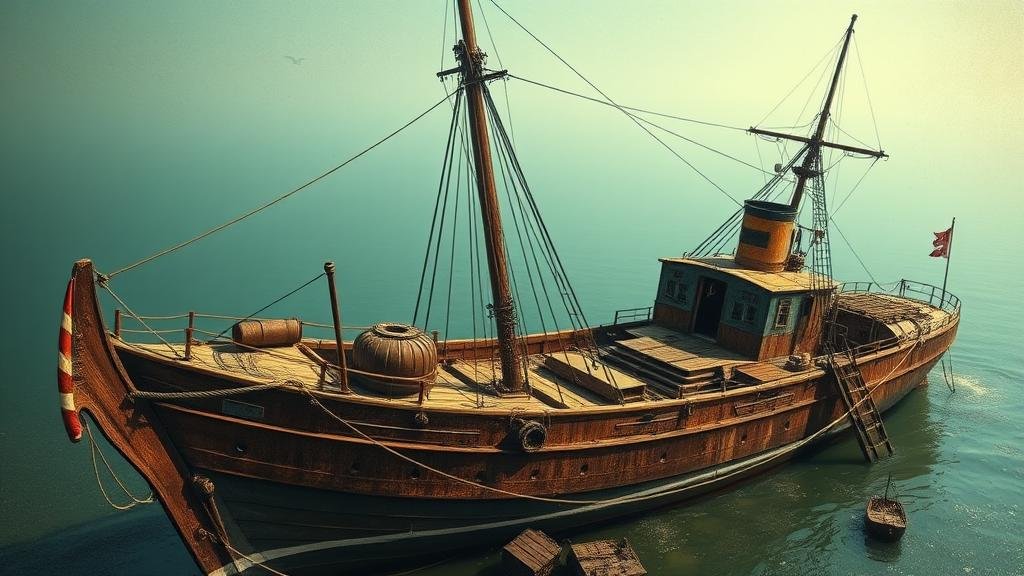Leveraging Early Maritime Salvage Reports for Unclaimed Shipwreck Sites
Leveraging Early Maritime Salvage Reports for Unclaimed Shipwreck Sites
The study of maritime salvage reports serves as a critical avenue for understanding unclaimed shipwreck sites. These reports, often produced following significant maritime events, encapsulate valuable information that can aid in identifying, locating, and preserving shipwrecks. This article elaborates on the importance of early maritime salvage reports, with a focus on their use in exploring unclaimed shipwreck sites. By examining historical precedents, methodologies for data utilization, and the implications for marine archaeology, this paper aims to provide a comprehensive analysis of this underutilized resource.
The Importance of Early Maritime Salvage Reports
Early maritime salvage reports are documents generated after shipwrecks that outline the circumstances surrounding a vessels loss, including ship specifications, cargo, and passenger details. These reports are crucial for several reasons:
- Documentation of Historical Events: They serve as primary sources that capsule historical maritime incidents.
- Identification of Maritime Resources: Salvage reports often include coordinates or descriptions of wreck locations, enabling subsequent research and exploration.
- Legal Ownership and Claims: They provide insight into potential ownership and legal nuances regarding unclaimed wrecks.
For example, the wreck of the RMS Titanic in 1912 continues to provoke discussions and research because a variety of salvage reports have documented its circumstances. Advanced salvage operations undertaken by groups such as Oceanic Exploration, LLC, utilized early reports to locate the wreck precisely and understand its cultural significance.
To leverage early maritime salvage reports effectively, researchers need to adopt systematic methods for extracting and analyzing relevant data. following methodologies have shown practical applications in uncovering shipwreck information:
- Data Compilation: Systematic compilation of historical salvage reports into a centralized database is essential. This grants researchers streamlined access to pertinent information.
- GIS Mapping: Geographic Information Systems (GIS) can be employed to map reported wreck sites, enabling researchers to visualize patterns and clusters of unclaimed shipwrecks.
- Cross-referencing Historical Records: Augmenting salvage reports with other maritime records, such as newspaper articles and navigational logs, enriches the dataset, providing robust insights.
For example, researchers at the University of Southampton have utilized GIS to demonstrate the correlation between reported shipwrecks in the English Channel and maritime traffic density during World War II. They discovered a significant number of unclaimed wrecks that remain undiscovered, which can be traced back to archival salvage documentation.
Implications for Marine Archaeology
The leveraging of early maritime salvage reports has profound implications for the field of marine archaeology. e implications are notable in several contexts:
- Conservation Efforts: Understanding the whereabouts of unclaimed shipwrecks allows for the proper conservation of underwater cultural heritage.
- Fundraising for Expeditions: Having documented evidence of previous salvage efforts can bolster fundraising campaigns aimed at exploring these sites, attracting both academic and commercial interests.
- Development of Ethical Guidelines: The detailed understanding gained from these reports fosters discussions about ethical salvage practices and the responsibilities of modern archaeologists.
A prominent illustration of this is the preservation efforts undertaken by the UNESCO Convention on the Means of Prohibiting and Preventing the Illicit Import, Export, and Transfer of Ownership of Cultural Property. The convention supports utilizing salvage documentation as foundational sources to justify conservation needs and actions.
Case Studies: Successful Applications of Salvage Report Analysis
Several real-world applications demonstrate the successful leverage of early maritime salvage reports in uncovering unclaimed shipwreck sites. Noteworthy case studies include:
- The Nuestra Señora de Atocha: After the ship sank off the Florida Keys in 1622, early salvage reports assisted in pinpointing the ships potential resting place, resulting in the recovery of gold and silver worth millions.
- HMS Pandora: The British Royal Navy ship sank near the Great Barrier Reef in 1791. After initial salvage reports indicated its location, extensive archaeological expeditions revealed valuable insights into 18th-century naval operations.
These cases exemplify how leveraging historical data can lead to successful expeditions that not only recover material artifacts but also enhance our understanding of maritime history.
Conclusion and Actionable Takeaways
This paper has elucidated the significance of early maritime salvage reports in accessing and investigating unclaimed shipwreck sites. The lessons drawn from historical data serve as a clarion call for researchers, policymakers, and conservationists alike to recognize and utilize their value. To efficiently capitalize on these insights, stakeholders should:
- Invest in developing comprehensive databases of maritime salvage reports.
- Use modern technologies, such as GIS and remote sensing, to enhance the understanding of wreck locations.
- Engage in collaborative initiatives involving governmental and non-governmental organizations to promote conservation efforts.
By following these steps, the maritime archaeology community can ensure that unclaimed shipwrecks are not only explored but preserved for future generations.



